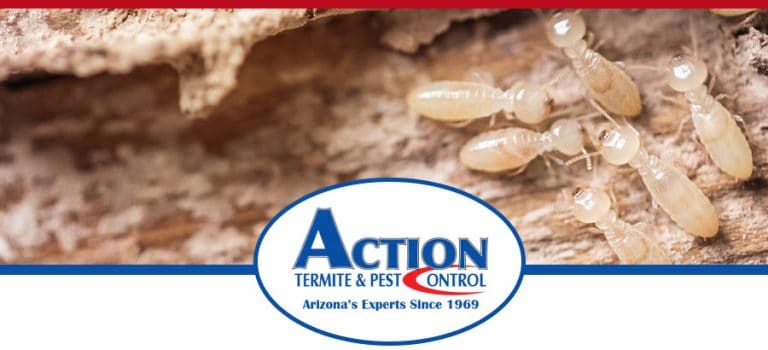
Think You Can Get Rid Of Termites On Your Own? Call Us Instead
If you suspect you have a termite problem, then the first thing you might be thinking about is buying a can of pesticide to get rid of the pests. … View Post


If you suspect you have a termite problem, then the first thing you might be thinking about is buying a can of pesticide to get rid of the pests. … View Post

Termites are always a major pest that can cause significant damage to your home in Sun City, AZ. Choosing to invest in professional termite control for your Sun City home … View Post

With the many types of small beetles and similar bugs that exist in the world, it’s always possible to jump to the wrong conclusion. You may have spotted a tiny,

The Phoenix area is home to a dry climate that rarely gets very cold. The dry wood termites that are commonly found in Arizona have adapted to this environment. They … View Post

It is common knowledge that termites will usually swarm all through the rainy season in Arizona. They are aggressive tiny pests that can cause much damage to any building. They … View Post

A termite outbreak can be a frustrating experience in your house. Are you concerned that a termite infestation might occur in your house? A pest control professional is always the … View Post

In Arizona, it’s recommended to have a termite inspection every year to make sure your home isn’t dealing with a hidden infestation. This can give you peace of mind while … View Post

If you’re into gardening, then you already know how great mulch is for plants, shrubs and trees in the greater Phoenix, Arizona area. Mulch traps moisture to help plants thrive. … View Post

Suddenly your yard or porch is covered in winged insects. They do not seem to fly very well, crashing into objects and not getting very far. They are here … View Post

As we have written about before, termites thrive in moisture-dense environments. The outside of you home is obviously susceptible to moisture as it is regularly exposed to the elements, but … View Post





We are a family owned & operated pest control company located in Phoenix, AZ. Serving Arizona since 1969, we have built a reputation for delivering the highest level of client service in the industry and have an all-star team of pest industry professionals that provide thousands of treatments each year. Our team of experts provide both residential and commercial services across the entire Valley. From recurring pest services that treat over 50 types of insects to industry leading termite treatment solutions, you can count on us to provide a solution that is safe, effective, and tailored to your specific pest control needs.




